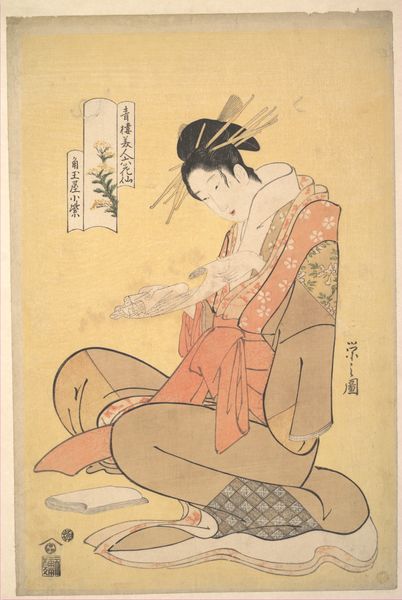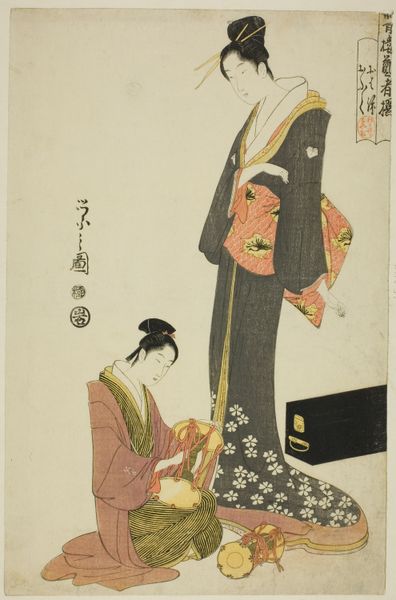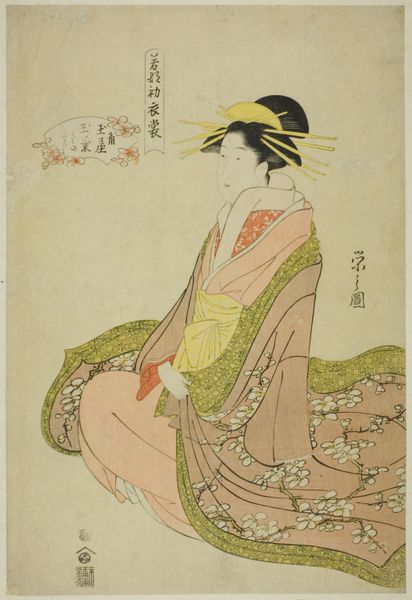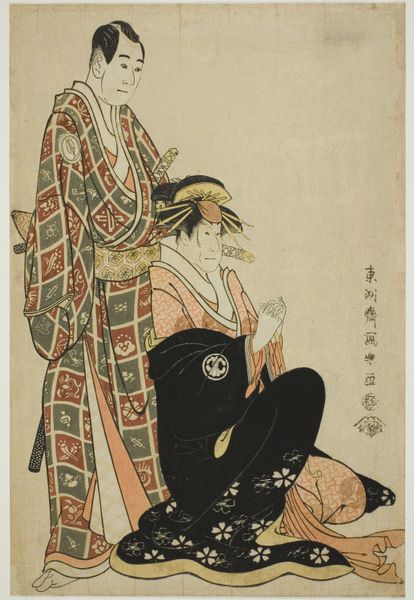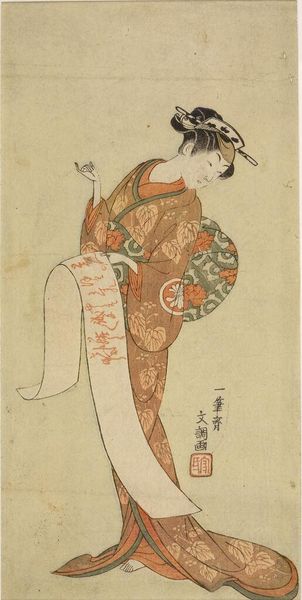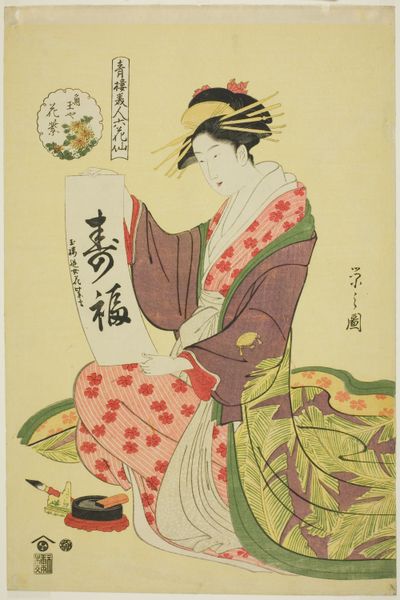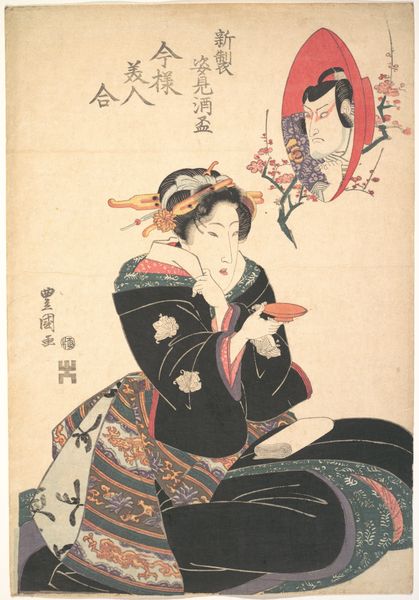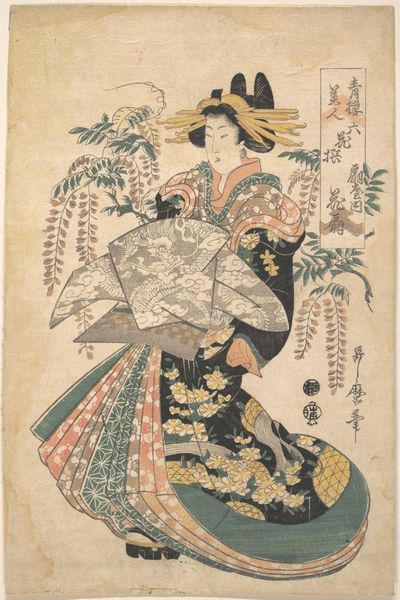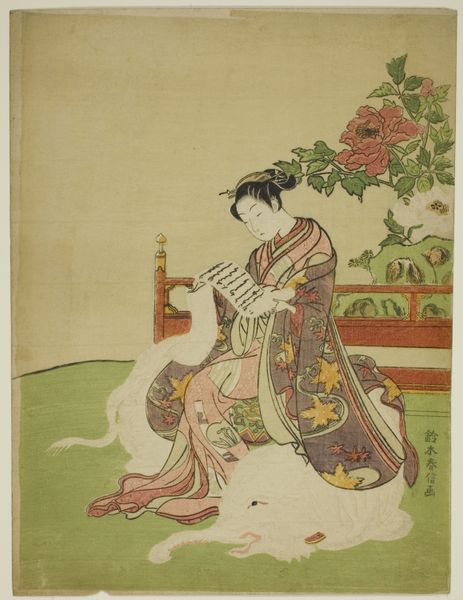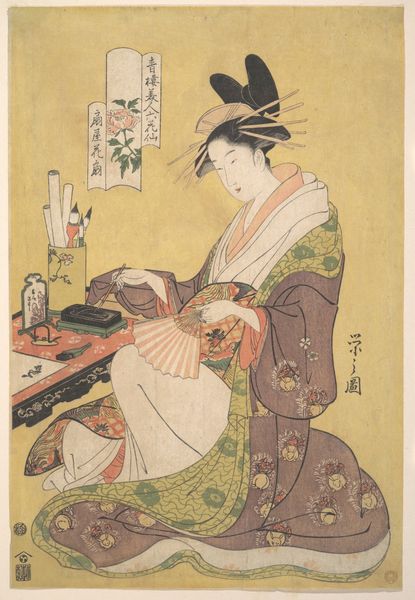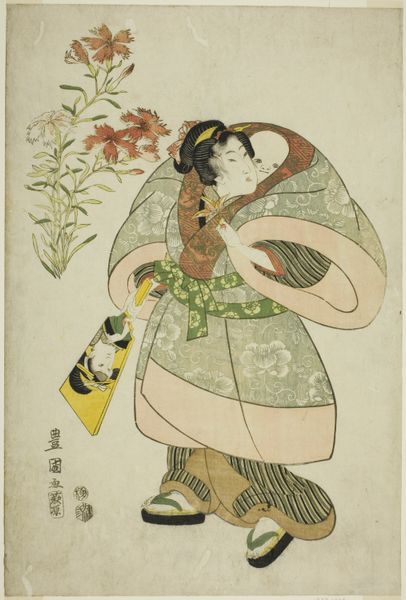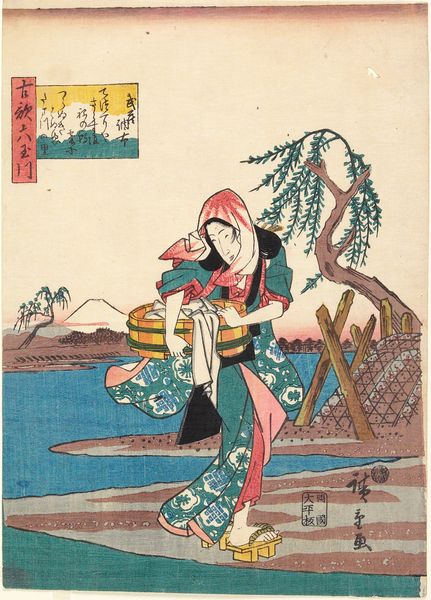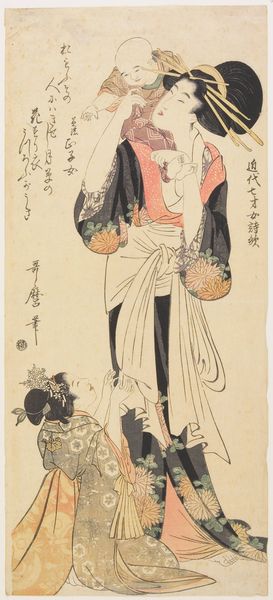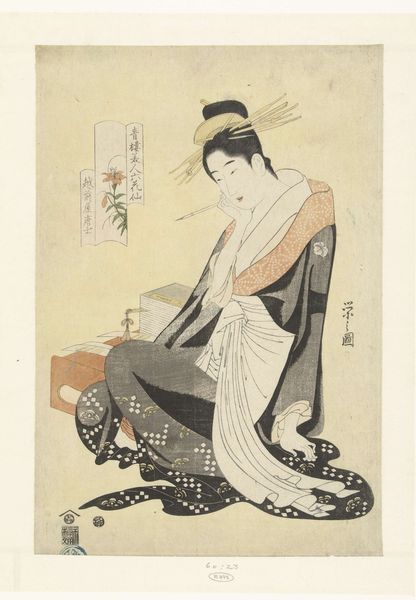
Komurasaki of the Kadotamaya, from the series Six Flowery Immortals of the Pleasure Quarters (Seiro bijin rokkasen) c. 1794 - 1795
0:00
0:00
print, woodblock-print
#
portrait
# print
#
asian-art
#
ukiyo-e
#
figuration
#
woodblock-print
Dimensions: 38.4 × 26.0 cm (15 1/4 × 10 1/4 in.)
Copyright: Public Domain
Curator: Here we have Chōbunsai Eishi’s woodblock print, "Komurasaki of the Kadotamaya, from the series Six Flowery Immortals of the Pleasure Quarters" created circa 1794-1795. It’s part of the Ukiyo-e tradition and presently resides here at The Art Institute of Chicago. Editor: What strikes me immediately is the delicate rendering of the woman, especially her contemplative gaze. There is an overall feeling of refined melancholy, and I notice the paper in her hands seems to be the object of her undivided attention. Curator: Ukiyo-e prints, which flourished during the Edo period, often depict idealized images of courtesans, actors, and landscapes. Eishi, known for his elegant and refined style, situates Komurasaki within the floating world, offering a glimpse into the lives of women navigating pleasure quarters and gendered social dynamics. Consider how such portrayals both reflected and constructed female identity and the eroticized female form within Tokugawa society. Editor: Absolutely. And it's compelling to see how specific motifs reinforce that reading. The elaborate hair ornaments, the layers of the kimono, all signal a distinct cultural vocabulary of beauty and status. The choice of yellow flowers may allude to deeper themes. The specific arrangement of the garment suggests both self-display and constraint. We should ask what traditions and cultural codes Eishi references in this work. Curator: Those layers offer indeed a narrative, constructed and complicated as they were, regarding expectations for women within Edo society. Through the gaze directed at Komurasaki and at her time we might unveil critical perspectives on sexuality, societal norms, and political contexts that underpin it. Editor: Right. It shows that visual representations carry profound cultural memory. These artistic renderings act as carriers, reflecting back at us the emotional and psychological landscapes of another era. Curator: Considering its historical placement as an Ukiyo-e portraiture, Eishi provides an insight into the construction of beauty standards but equally, it underscores that identity in any period is never without struggle. Editor: This print is more than an image. It's a time capsule that offers so many cultural reflections and questions to keep asking, and whose delicate details whisper so much meaning.
Comments
No comments
Be the first to comment and join the conversation on the ultimate creative platform.
